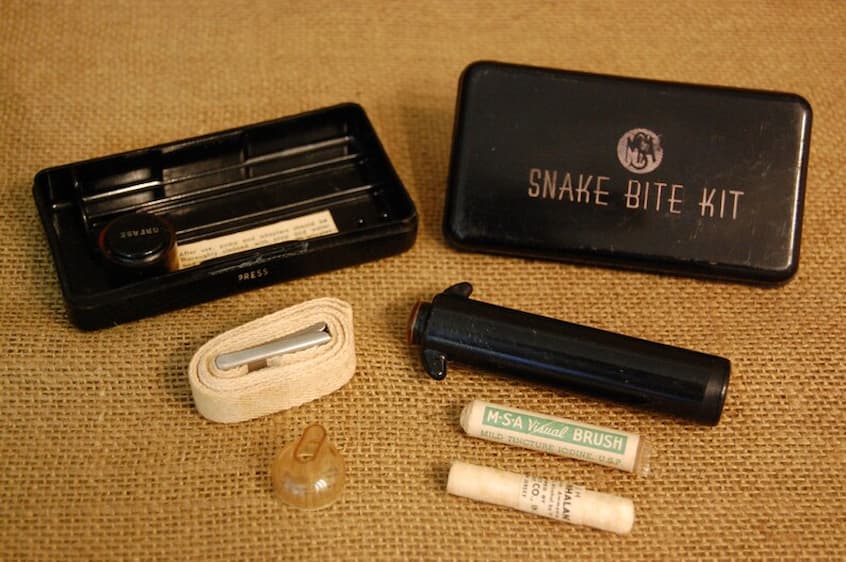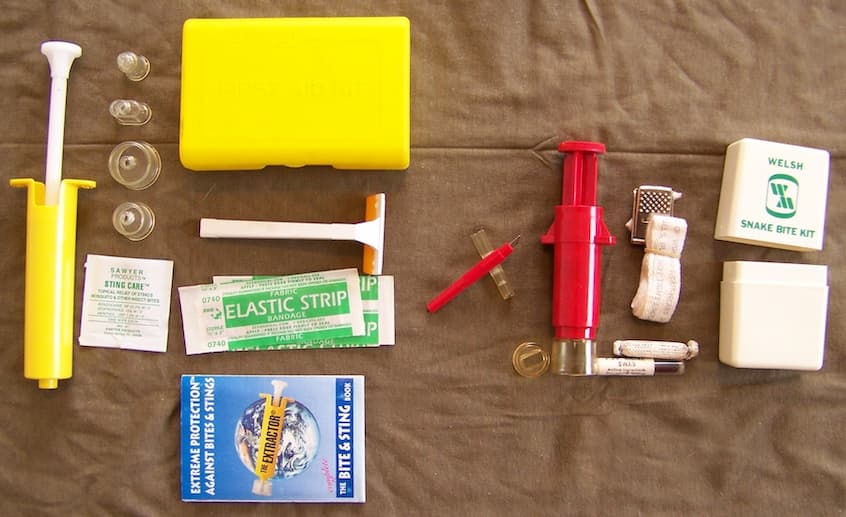
A Guide to Snake Bite Kits
It’s widely known that Australia is one of the most dangerous places to live when it comes to wildlife. There are more than 140 types of venomous snakes moving around at any time. There’s a big chance you’ll meet one eye to eye at some point. Some of them are not life-threatening, but some can cause serious medical conditions and even death.
To prevent this from happening, you should always be careful, learn how to protect yourself, be aware of what areas to avoid, and most importantly have a snake bite kit close to you. This is a small bag that can be a true lifesaver in some situations.
Contents
What’s a Snake Bite Kit?

It’s a first aid kit that contains everything you need to stay safe in this emergency situation until help arrives or you arrive at the hospital. Statistics show that there are around 3,000 snake bites in Australia every year. This is a number that can’t be overlooked, and we should work on decreasing it in any possible way we can. One of the ways to do this is to buy well-equipped snake bite kits for your safety.
The first thing a kit needs to have is a stretchable bandage that can stretch out at least 10m. This way you can keep your whole arm or leg safely secured. It should have a splint as well, preferably one that is mouldable so you can store it in the bag. The next thing is a marker, so you can mark the location of the bite on the person. This will be of great help to the doctors when you arrive in the emergency room.
The kit should also have an ice packet. This is not something that every kit has, it’s optional, but always works as a good pain reliever that comes in handy. Another optional item is non-woven swabs. On the other hand, an information leaflet is mandatory. It contains all of the important information on how to handle the bite and guides on how to identify the type of bite.
Of course, all of these components should come in a practical bag. The bag needs to be easy to open, lightweight, with the needed zippers and compartments, and preferably have reflective tape. Some other optional features are gloves, wipes, tick remover, magnifying glass and an itch eraser. Once you use the kit, always replace it with a new one. Keep an eye on the expiration date so you have a usable kit in case of an emergency.
Types of Bites

Dry Bites
A dry bite is when the person gets a bite from a snake but no venom is released into the wound. According to many types of research, this is the case in almost 90% of the bites. The pain level is still very high and the person gets swelling and redness in the affected area. However, you can never be absolutely sure that it’s a dry bite. So, the best thing to do is to call an ambulance and the professionals will know for sure if there’s venom inside or not.
Venomous Bites
This is a serious case of snake bites. A venomous bite is when the snake releases venom into the wound of the person. No matter how many snake bite kits you have with you, the most important thing is to call the ambulance. The venom is a powerful weapon that the snake uses to kill its pray and stand up to other predators that want to kill it. There are many symptoms that will appear, but some of them will come later rather than sooner and can take up to several hours. The most common symptoms are:
- Stinging and burning of the skin;
- Severe pain around the bite;
- Dizziness;
- Blurred vision;
- Stomach pain;
- Headaches;
- Difficulty breathing;
- Muscle weakness;
- Confusion;
- Paralysis;
- Collapse;
- Coma and even death.
How to Use the Kit?

As soon as we’re getting close to the spring season, we should get prepared for encounters with snakes. You can never predict when this will happen so it’s better to be prepared with some first aid for snake bite when you’re out and about. These things can happen on your camping trip, in your backyard or at the park. That’s why you should have a kit with you as part of your camping essentials, in your car and at home. But you should also know how to use it properly.
The pressure immobilisation approach is the best way to treat a snake bite. Calling triple zero (000) will bring emergency assistance as soon as possible. This is the first thing you should do. Also, keep the person as calm as possible. A lot of movement will spread the venom faster than usual. Even though you’ve seen people suck the venom out of the wound, don’t do it. It’s just a myth and won’t do anything good for the person.
For example, let’s say the person has a bite on the wrist. In this case, you should remove any jewellery such as bracelets, watches and rings on their hands. Swelling is a common occurrence and the person can lose a finger in the process. Grab the kit and take the stretchable bandage. You’ll see that it’s marked with rectangle shapes all over its length.
Start by making a couple of wraps around the wrist and tighten it so the rectangles become squares. Anything tighter than that can cause damage. Go down the limb and make sure you mark the bite spot on the bandage. Leave the tips of the fingers exposed so you’ll see if they start changing colour. Wrap upwards again and if you cover the marked spot, mark again.
This way the doctors will know immediately where the bite is. Wrap up to the shoulder and tape the bandage down. Keep the person calm at all times. Take the splint and tape it to the arm so it stays still. If you don’t have a splint, you can use branches, boards, or anything else you can find. Try to remember the time the bite happened so you can tell the doctor, keep an eye on the vital signs of the person, and write down any changes in their condition.
Things You Shouldn’t Do
As we mentioned before, don’t try to suck the venom out of the wound. Also, don’t try to cut out the wound with a knife. This won’t do any good to the person. It’ll just make it more painful and the venom won’t stop spreading. Use encouraging words to keep the person calm. Don’t give them alcohol as an anaesthetic or to help them relax. They need to be completely aware of the things that are happening and alert you if their condition is worsening.
How to Protect Yourself
Even though you can never be 100% sure you’re completely safe, there are several things you can do to protect yourself as best as you can. Always be aware of your surroundings. Keep your eyes open especially if you’re moving into a grassy or bushy area. Don’t wear open-toe shoes in this case. Always protect your feet with long pants and high boots. Always check your shoes before putting them on. And in case there is a snake inside, stay calm, back up and don’t make sudden movements. Instead of trying to handle the problem on your own, contact professional local snake catchers.

